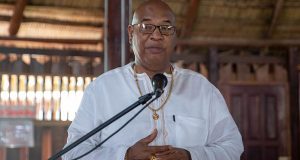Rajiv is 40, single, has no debts, and rents an apartment. He has $50,000 in his Registered Retirement Savings Plan (RRSP), but hasn’t saved any money to make a contribution to his RRSP this year. He has access to a line of credit. Should Rajiv borrow money to make an RRSP contribution this year?
“If Rajiv makes $75,000 a year or less, an RRSP contribution won’t generate a very large tax refund,” says Chris Alexander, CPA, CA, CBV, Principal, CJA Professional Services in Oakville. “If he is making $100,000 or more, and is in a higher tax bracket, it may be advantageous to make an RRSP contribution because the refund will be higher.”
Alexander says it may make more sense for Rajiv to not make an RRSP contribution this year. “Instead of taking out a loan to finance an RRSP contribution, he could skip this year and make a diligent effort over the coming year to contribute each month to his RRSP,” he explains. “This is a better approach than always playing catch-up by paying off an RRSP loan from the prior year. Also, if he borrows to make an RRSP contribution, the interest on the loan is not tax deductible.”
Rajiv should make the decision in the context of his overall financial and retirement plan, advises Tom Trainor, CPA, CA, Managing Director, Hanover Private Client Corporation in Toronto. “Before thinking of borrowing, he should look at the stability of his employment, his cash flow and what he would do if he lost his job and couldn’t service the debt,” explains Trainor. “Does he have an emergency fund? Does he have disability insurance if he becomes ill or is injured? Can he cut back his spending if he has to? Rajiv needs to assess these risk factors.”
Placing some funds inside a Tax-Free Savings Account (TFSA) is another option for Rajiv. “If he is considering buying a house in the next few years, putting money into a RRSP just ties up the funds,” says Alexander. “A TFSA is more flexible because you can take money out without affecting your ability to use a TFSA again in future years.” That being said, under the federal Home Buyers’ Plan, Rajiv may be able to borrow up to $25,000 from his RRSP to buy or build a house. A number of conditions apply, so he should seek professional advice before going this route.
If Rajiv does not contribute to his RRSP this year, he can carry forward his unused contribution room to a future year. “If he decides to borrow to contribute to his RRSP this year, he can take the tax deduction this year or carry it forward to another year,” says Trainor.
Both Alexander and Trainor agree that, if Rajiv does borrow to make an RRSP contribution, he should use his tax refund to pay down the debt. “It’s human nature to earmark a tax refund as some kind of windfall to be used for things like vacations or a big screen TV,” says Alexander. “But it should definitely be applied to paying off the loan.”
Brought to you by the Chartered Professional Accountants of Ontario.
 Pride News Canada's Leader In African Canadian & Caribbean News, Views & Lifestyle
Pride News Canada's Leader In African Canadian & Caribbean News, Views & Lifestyle




